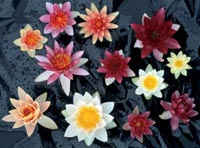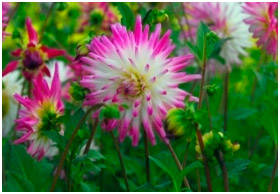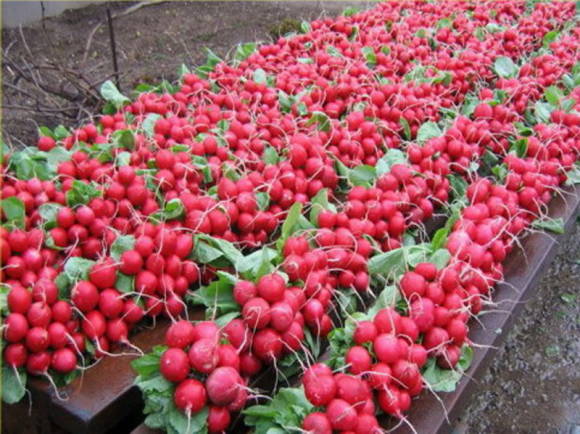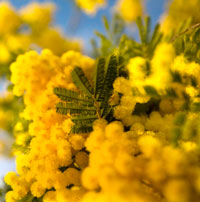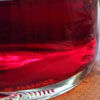
Currently the freesia is broken (Freesia refracta, homeland - South Africa) is one of the most common flower plants in protected ground. At the auction in Aalsmeer, Holland, it continues to be among the top 10 most sought after cut crops. Flowers of bright saturated or delicate pastel color attract attention with a subtle, pleasant aroma.
However, several decades passed before the cultivation of cut freesia in European horticultural enterprises reached large volumes. At the turn of the XIX-XX centuries, when freesia was just beginning to grow, there was only 1 variety, by the end of the 1930s - 2, in the 1940s - already about 25. Production volumes increased significantly after the end of the war in 1945. the creation of new varieties at that time was carried out by breeders of Holland, Great Britain, USA, Denmark, France and Germany. So, by 1960, about 57 new products were received. Derived in the 60s of the XX century. foreign cultivars were widespread even in the last decades of the last century.
Freesia was brought to Russia from Holland in 1963, but its cultivation reached an industrial scale only by 1980. It was during this period that freesia research was intensified at the All-Russian Research Institute of Floriculture and Subtropical Crops (VNIITSISK, Sochi), including the issues of introduction, variety study, control with pests and diseases, as well as the development of technology for the cultivation and reproduction of crops in the conditions of the Black Sea coast of the Krasnodar Territory. In 1984, experiments began to create varieties resistant to diseases and unfavorable environmental conditions (high summer temperatures, their sharp drops during the day and night) in the humid subtropics of Russia.
Due to the changes taking place in our country over the past 18–20 years, the flower market has been filled with imports, a significant share of cut and pot flowers are supplied by the private sector today. However, increasing the production of high-quality flower products remains an urgent task, which requires a new, more perfect and varied assortment.
To maintain a high economic effect in the cultivation of freesia, it is necessary to renew the assortment every 8-10 years. Therefore, our institute has developed theoretical and methodological methods for creating new varieties of freesia on the basis of intervarietal, interspecific and heterogeneous crosses, including for the first time in our country using the culture of ovules in vitro. During the period of breeding studies, 279 combinations of crosses were carried out. Selected, multiplied and studied 363 samples.
 |  |
From 1997 to the present, the Register of Breeding Achievements of the Russian Federation includes 20 domestic varieties of freesia of the double and non-double type:
- with yellow petals - "Anyuta", "Cinderella", "Tenderness", "Festive", "Sunny Beach";
- red - "George the Victorious", "Caramel", "Lada", "Mars";
- white - Valeria, Dream, Urusvati, Juno;
- blue-violet - "Valentina", "Blue Pearl", "The Seagull";
- pink-purple - "Irina", "Purple", "Elizabeth", "Jubilee".
In the last 2 years (2009–2010), 4 new cultivars were transferred to the State Variety Test: "Cardinal" and "Sonnet" (flowers are red), "Frost" (white), "Romance" (bright pink).
 |  |
Below is a description of some of the varieties bred in Sochi.
- "Anyuta". The plant is 61.5 cm high, with 3-4 peduncles. Flowers 5.2 x 4.6 cm, yellow, non-double, with a pleasant aroma, collected in an inflorescence (8-10 pcs.) Variety of medium early flowering period. Corm propagation factor 5.2.
- "Valentina". The plant is very tall (over 90 cm). The flowers are large, of the same height and diameter (7 cm), blue-violet, non-double, fragrant.Variety of medium flowering time, reproduces well, multiplication factor 5.9.
- "Valeria". The plant is tall (85.7 cm). Flowers 6.5 x 7.5 cm, white, non-double. Very decorative variety with medium early flowering period. Reproduction factor 4.7; the mass of a large corm is 11.7 g.
- "Cinderella". The plant is 91.2 cm high. Flowers 6.5 x 6.2 cm, light yellow, semi-double. Late variety. Reproduction factor 4.1; the mass of a large corm is 11.6 g.
- "Irina". The plant is 68.5 cm high with 2-3 peduncles. Flowers 5.6 x 4.7 cm, pink-purple, non-double, collected in inflorescences of 8 pcs. Medium early variety. Reproduction factor is 6.1.
- "Lada". Plant with a height of 84.5 cm with a stable peduncle. Flowers 7.0 x 6.0 cm, red-purple, collected in inflorescence up to 10 pcs. Medium late variety. Reproduction factor 3.6; the mass of a large corm is 13.2 g.
- "Dream". The plant is tall (85 cm). The flowers are rather large, 6 x 6.2 cm in size, white with a slight lilac shade, non-double, with a delicate aroma, collected in inflorescences of 9-10 pcs. A very original variety with a medium early flowering period, in dissolution - more than 20 days. Reproduction factor 6.3. In 2010, the cultivar received a silver medal at the Russian agro-industrial exhibition "Golden Autumn" in Moscow.
- "Mars". The plant is 79.2 cm high with 3 peduncles. Flowers 7.0 x 6.2 cm, bright red, non-double, collected in inflorescences of 8-9 pcs. Medium flowering variety. Reproduction factor 3.6.
- "Festive". The plant is 73.6 cm high with 2 peduncles. Flowers 5.0 x 6.8 cm, bright yellow, double, very fragrant, collected in inflorescences of 7-8 pcs. Medium early variety. The breeding factor is 6.9.
- "Gull". Plant 78.1 cm high. Flowers 7.2 x 6.0 cm, original color (white with a wide blue border), non-double, with a pleasant weak aroma. Very early variety. Reproduction factor 5.2.
 |  |
- "Urusvati". The plant is 62.8 cm high with 3-4 peduncles. Flowers 5.8 x 5.3 cm, pure white inside, light lilac on the outside, non-double, collected in inflorescences of 8-9 pcs. Early variety, very good for potting. Reproduction factor 5.1.
- "Anniversary". The plant is 83.5 cm high with 2-3 strong peduncles. Flowers 6.9 x 6.0 cm, deep pink, non-double, with a slight aroma, collected in inflorescences of 8-10 pcs. Medium flowering variety. Reproduction factor 5.1.
- "Juno". Tall plant (76 cm). The flowers are large, 6.5 x 7 cm, white, with a slight aroma. Late variety. Looks great in bouquets without complementing other colors. The breeding factor is 3.8.
 |  |
All varieties, created by us on the basis of intervarietal direct and reverse crosses of foreign and domestic tetraploids, are not inferior to foreign samples in terms of decorative qualities and productivity of cut products. However, they are superior to "foreigners" in resistance to variegation virus and fungal diseases, have increased resistance to adverse environmental factors, they can be grown for a long time in the conditions of the Black Sea coast of southern Russia. If, under the conditions of Sochi, corms are planted in a heated greenhouse in mid-late October, then the plants bloom in mid-February - early March, and if not heated, then by March 20. The varieties can also be successfully grown in heated protected ground in many regions of Russia. They are recommended for cultivation for cutting and obtaining planting material in industrial, farm and private flower farms.
 |  |
Literature.
1. Balchune B. Freesia. // Floriculture, 1966, №5. - S. 15-16.
2. Balunene A.I. Freesia: Temperature is the main key to crop management. // Floriculture, 1977, №8. - S. 22-23.
3. Balunene A.I. Influence of mineral fertilizers on freesia flower production, corm yield and content of N, P, K in them. // Book. Botanical gardens of the Baltics: greenhouse plants. - Riga. Zinatne, 1982 .-- S. 158-177.
4. Bulls A. Freesia - fragrant charm. // Floriculture, №1. - 2009. - S. 18-20; No. 2-2009. - S. 14-15.
5. Efimov G.V. Refresh the freesia assortment. // Floriculture, 1977, №12. - WITH.8-9.
6. Zakie Z. The culture of freesia. // Floriculture, 1964, №5. - S. 7-8.
7. Mokhno V.S. Elegance itself. // Household farming, 2005, №1. - S. 66-70.
8. Samoilova R.V. Industrial culture of freesia on the Black Sea coast of the Caucasus. // Mat. Sov. (?) "Cultivation of planting material of bulbous flower crops." - Sochi, 1974 .-- S. 165-166.
9. Berghoef I., Melcherts I.W.F., Mourits I.A.M. and Zevenbergen A.P. Effect of temperature on initiation and development of freesia flowers // Acta Hort. 177, 1986. - P. 636.
10. Gilbertson Ferris T.L., Wilkins H.F., Response of Freesia Hybrida corms to exogenous growth regulator applications. // Hort. Science 16 No. 4. - 1981. - P. 68-70.
11. Leeuwen V. Proef bij "Balerina": Preparer freesia - knollen niet te Kort, // Vakbl. Bloem, v. 37, no. 11. - 1982. - P. 37.
12. Rupprecht H. Freesie. // Berlin, 1988. - 132 p.



